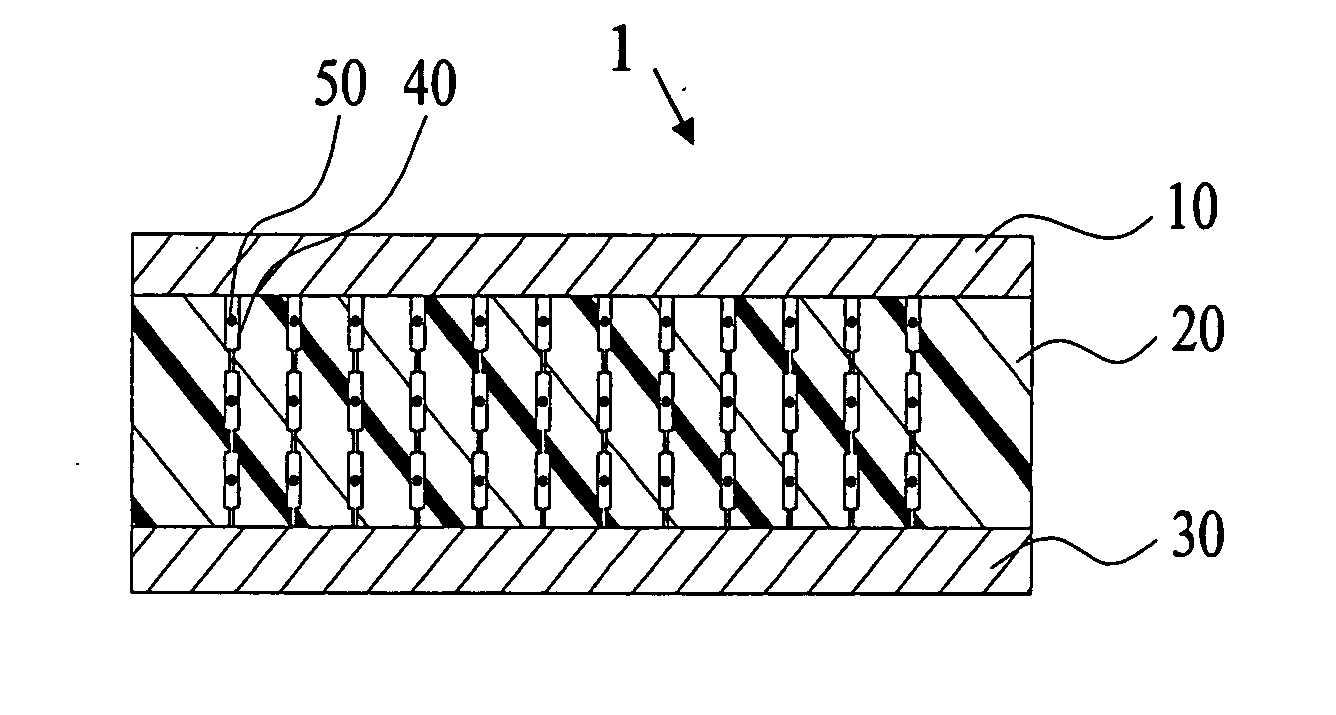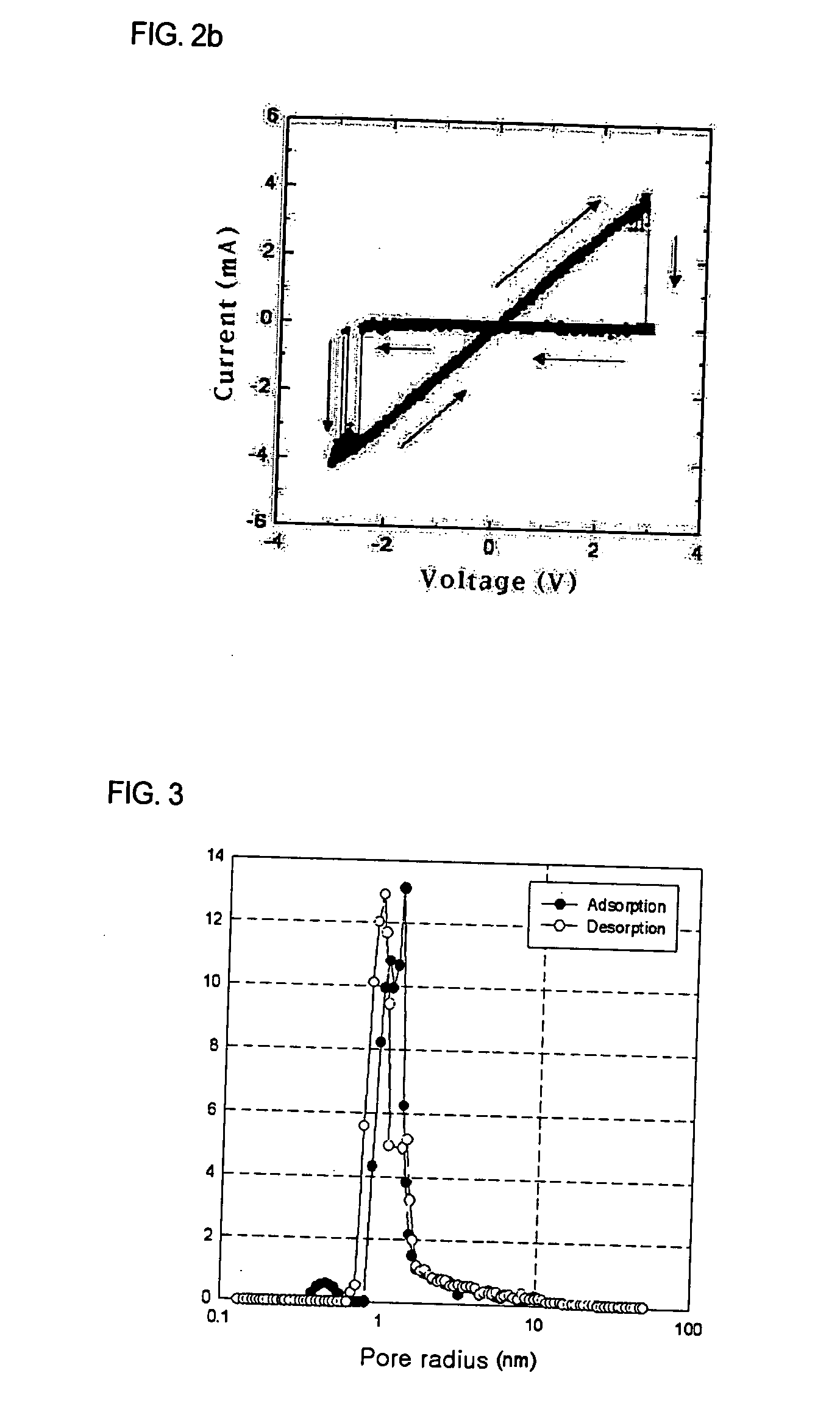Nonvolatile nanochannel memory device using organic-inorganic complex mesoporous material
- Summary
- Abstract
- Description
- Claims
- Application Information
AI Technical Summary
Benefits of technology
Problems solved by technology
Method used
Image
Examples
example 1
[0088] A memory device was manufactured as follows. First, Al serving as a lower electrode was deposited to a thickness of 80 nm on a glass substrate having a size of 50×50 mm2 using thermal deposition.
[0089] Then, an organic-inorganic complex matrix precursor for use in manufacturing an organic-inorganic complex thin film having nanopores was manufactured according to the following procedures. That is, into a flask, 41.6 mmol (10.00 g) 2,4,6,8-tetramethyl-2,4,6,8-cyclotetrasiloxane was loaded, and then diluted with 100 ml of tetrahydrofuran (THF), and added with 700 mg of 10 wt % Pd / C (palladium on charcoal). Subsequently, 177.8 mmol (3.20 ml) distilled water was added, and the generated hydrogen gas was removed. The reaction was conducted at room temperature for 5 hr, after which the reaction solution was filtered through a celite and MgSO4. The filtrate was placed under a reduced pressure of about 0.1 torr to remove volatile material, and 41.6 mmol (12.6 g) compound thus obtaine...
example 2
[0095] A memory device was manufactured in the same manner as in Example 1, with the exception that an upper electrode was formed of Au. The I-V graph showing memory properties of the device is shown in FIG. 5. As confirmed in the I-V graph, when the upper electrode was formed of Au, fast switching occurred. That is, low resistance was switched to high resistance at +2 V, resulting in a reset state. On the other hand, high resistance was switched to low resistance at −1.5 V, exhibiting a set state. The resistance values of two states were measured at 453Ω and 230Ω, respectively. The two different resistance states may be read even at a low reading voltage, and thus, the device may be used as a memory device.
[0096] As described hereinbefore, embodiments of the present invention provide a nonvolatile nanochannel memory device using an organic-inorganic complex mesoporous material. A memory device using a mesoporous material of embodiments of the present invention has nonvolatile prop...
PUM
| Property | Measurement | Unit |
|---|---|---|
| Temperature | aaaaa | aaaaa |
| Thickness | aaaaa | aaaaa |
| Thickness | aaaaa | aaaaa |
Abstract
Description
Claims
Application Information
 Login to View More
Login to View More - Generate Ideas
- Intellectual Property
- Life Sciences
- Materials
- Tech Scout
- Unparalleled Data Quality
- Higher Quality Content
- 60% Fewer Hallucinations
Browse by: Latest US Patents, China's latest patents, Technical Efficacy Thesaurus, Application Domain, Technology Topic, Popular Technical Reports.
© 2025 PatSnap. All rights reserved.Legal|Privacy policy|Modern Slavery Act Transparency Statement|Sitemap|About US| Contact US: help@patsnap.com



